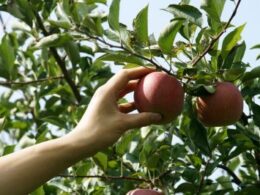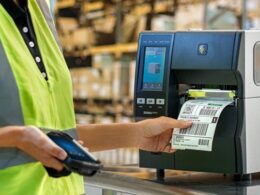Food Traceability: Why and Who
Let’s delve into the topic of food traceability and its significance.
In essence, food traceability is super important because it helps track every movement of a food product throughout the supply chain, from its origin to your plate. This applies to all components involved in the food supply chain, including raw materials, ingredients, additives, and packaging materials.
Why?
The ultimate objective of a robust food traceability system is to enable swift recall or other corrective measures in case of safety or contamination issues. Companies can use their traceability systems to promptly identify the affected products, assess the extent of the problem, and share essential information with relevant organisations and stakeholders.
The Food Standards Code of Australia and New Zealand (FSANZ) has specific requirements for food traceability, including labeling regulations, actions to be taken when businesses receive food products, and procedures for issuing food recalls. In addition, certain types of food, such as poultry, seafood, and seed sprouts, have stringent production and processing requirements. These regulations exist to safeguard the health of consumers and businesses from contaminated or hazardous food products.

According to Queensland Health, Australia experiences more than 285,000 cases of Salmonella and Campylobacter, which are among the most prevalent foodborne illnesses, each year. These diseases and other foodborne illnesses have serious health and economic consequences, costing approximately $1.249 billion annually. Therefore, food traceability is crucial in preventing the spread of dangerous products, reducing the risk of foodborne illnesses, and minimizing the economic burden on society.
Who?
Every business that handles food products must adhere to traceability standards and implement governance policies that ensure compliance throughout the company.
In the primary food industry, producers who cultivate animal products, engage in fishing or pearling operations, or produce poultry, seafood, dairy, egg products, and seed sprouts must keep written records detailing the immediate recipients of the products and the suppliers. Dairy farmers must identify the cows to be milked, while egg producers must mark each individual egg with the producer’s unique identification.

For manufacturers, once food is transferred from the primary producer to any transformation process, such as manufacturing or canning, the record-keeping for traceability shifts. Manufacturers must not accept any food deliveries that appear unsafe or unsuitable for consumption, or where the recipient has reason to believe the food is not of acceptable quality for consumption. The manufacturer must review the name and address of the supplier, the lot identification, batch number, or other unique identifier, as well as the name of the food type being delivered. These measures ensure accurate tracing of food back to the previous stage, which is a crucial factor in seamless traceability.
All those involved in selling or handling food for sale, such as restaurants, fast food chains, delis, and supermarkets also have a role to play in traceability. Like manufacturers, these businesses need to scrutinise all the details about the source of their food products. In case such information is missing or incomplete, the best course of action is to reject the delivery altogether.
Each stage in the supply chain presents opportunities for errors that can have severe implications. Implementing and consistently maintaining food traceability standards enables businesses to respond swiftly and effectively when something goes wrong.
Stay tuned for our next blog post, where we’ll share tips on how to support good traceability standards in your workplace.







